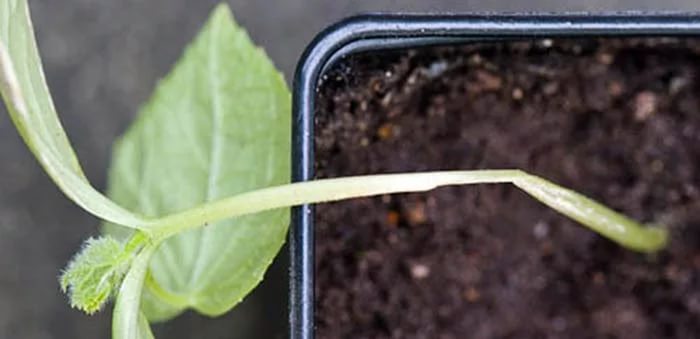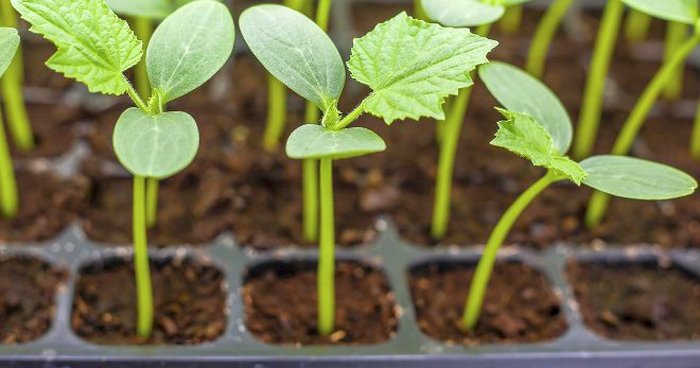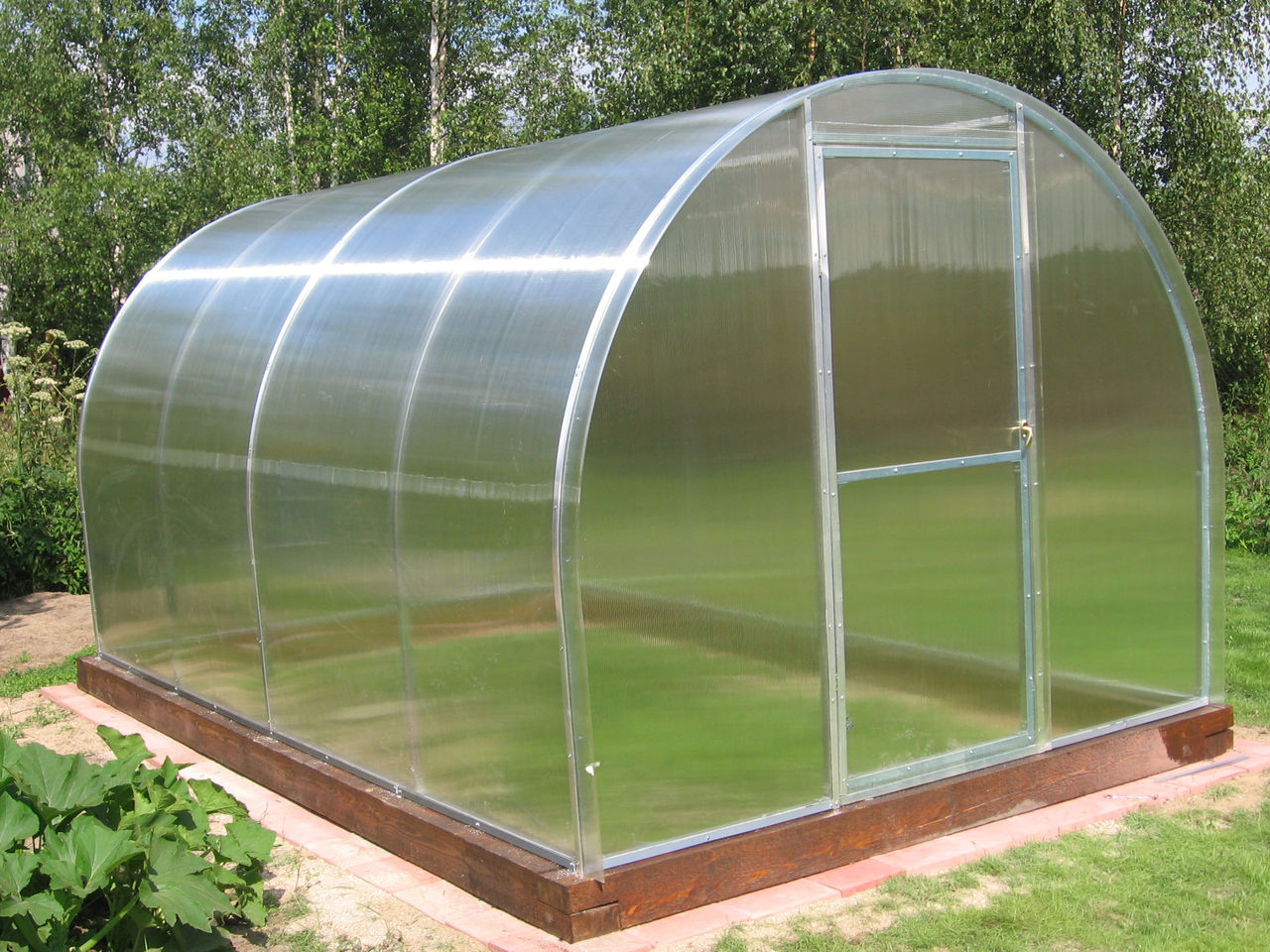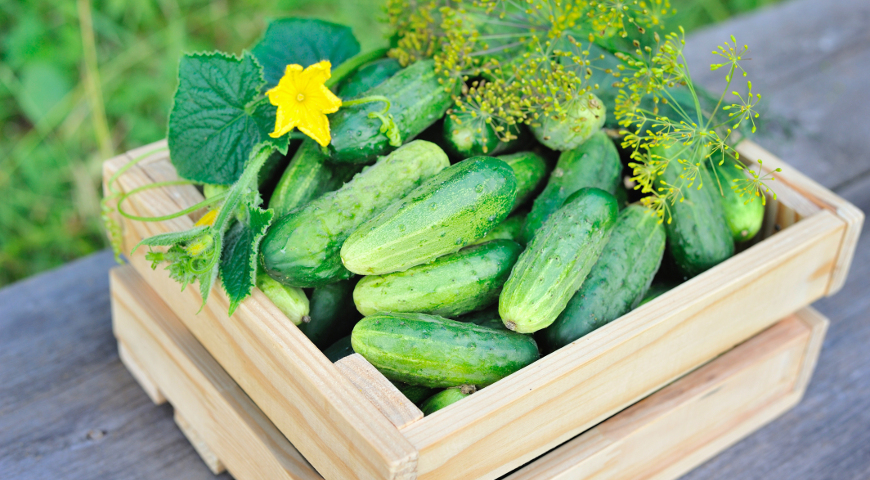Content:
Perhaps there is not a single gardener who would not grow cucumbers on his plot. To crunch cucumbers in June - July, you must first grow strong healthy seedlings, and in central Russia, you must also fight unfavorable weather conditions. Nothing fancy, but seedlings need careful maintenance and are prone to disease, pest attacks and other problems. If you do not know the rules for growing seedlings, the crop will die.
How to sow cucumbers correctly
Before sowing, cucumber seeds are soaked in a solution of potassium permanganate, which will protect against viral diseases. If the seeds are treated with protective substances (covered with a colored coat), they do not need to be soaked. After 20 minutes, the seeds are washed and kept in a damp cloth for 24 hours. Then they are placed in the refrigerator for a day for hardening.
Now the seeds are sown in separate pots with soil and a sufficient amount of organic matter, covered with cling film or cellophane and placed in a warm place for germination. As soon as the first cotyledons appear, the cups are opened and placed in the brightest place in the house.
In the first three days, the temperature is maintained at + 28 + 23 ° С, then it is lowered to + 20 ° С. At this temperature, the seedlings stretch less. Water as the soil dries up. They monitor the condition of the sprouts to prevent the fall and death of plants.
How to prepare the ground
If the seedlings will grow in a greenhouse, they must be prepared in advance. Since autumn, the land is cleared of debris, but it is better to remove the top layer and fill in new soil. If this is not possible, the beds are treated with a solution of Hyocladin. The soil is immediately fertilized and dug up.
It is imperative to treat the frameworks with a solution of bleach at the rate of 400 g per 1 liter of water. Iron parts are painted with water-based paint, and wooden parts with vitriol.
For complete disinfection, fumigation is carried out. You can simply make a fire and carefully close the windows and doors, or set fire to lumps of sulfur mixed with kerosene in special containers. This is done at a temperature not exceeding 18 ° C.
To protect plants from harmful microorganisms and fungi, the soil is treated with Fitosporin before planting seedlings.
Before planting cucumbers, they check whether the earth has warmed up, whether there is enough organic matter in the soil, then the seedlings will take root well and will not disappear.
But even on alkaline soils, cucumbers will hurt. If it is not possible to take measurements, pay attention to the weeds. Woodlice, horse sorrel, mint, bearberry, moss grow on acidic soils. Such soil needs deoxidation or liming. Suitable for cucumbers is neutral soil on which yarrow, wormwood, quinoa, nettle, clover, and fire grow.
Cucumbers are regularly fed and treated with special agents for the prevention of diseases.
With the further cultivation of cucumbers in the greenhouse, the temperature is maintained at 19 - 26 ° C.
For bee-pollinated varieties, means of attracting insects are used.
Seedlings are regularly ventilated and, if necessary, shaded.
The fruits are regularly harvested, otherwise the leaves will wilt.
Why do cucumber seedlings die
To understand this, you need to distinguish signs of the most famous diseases.
- Mealy dew... This common disease is caused by a fungus. The leaves on the cucumbers are covered with a white powdery coating, and then wither and dry out.
- Peronosporosis... The better known name for this disease is "Downy mildew". The leaves turn yellow, the spots enlarge, and the sprouts wither. Seedlings can disappear without intervention.
- Anthracnose... People call this disease "Medyanka". Copper-colored orange spots appear on mature plants and seedlings, and even on fruits.
- Fusarium... In another way - "root rot". It is caused by a fungus that lives in the soil for a long time and affects the roots of plants, which causes the sprouts to rot and soon die.
- Sclerotinosis... At first, the disease is manifested by the appearance of light fluffy mold on the seedlings. Then the plants become covered with dark spots and dry out.
- Black leg... This is how gardeners call a dangerous fungal infection. Fungal spores spread quickly. All seedlings can fall in one day.
Diagnostics of the causes of wilting of cucumber seedlings
Cucumber seedlings require constant attention. Young shoots need to be regularly examined to understand why the cucumber seedlings suddenly wither:
- if suddenly the lower leaves turn yellow, the plant does not have enough potassium, phosphorus, magnesium;
- if the upper leaves turn yellow, you need zinc, boron, iron, manganese.
- if you overfeed the plants with nitrogen, yellow burns appear on the leaves. In such cases, the deficiency of the necessary trace elements is made up or the excess is removed, that is, the plant is transplanted into a larger pot, the roots are washed with water;
- if the seedlings are stretched, provide sufficient lighting to prevent burns, and check if there is enough space for the sprouts;
- if the leg of the cucumbers dries, a constriction appears, the seedlings are mulched and watered with a solution of potassium permanganate and biological products.
Sometimes seedlings in cups begin to wither and fall one by one. It is necessary to carefully examine them: whether a pest has entered the soil, are there any signs of root rot. Take appropriate action immediately and remove infected plants immediately.
What to do if cucumbers wilted after transplanting
It is recommended to plant seedlings so as not to damage the roots, place four plants per square meter. It is advisable to treat with Kornevin or Epin for better survival. For 2-3 days, shade the seedlings, water on time, feed according to the instructions for the preparation.
Seedlings will not die due to fungus:
- milk serum;
- infusion of garlic;
- soda solution;
- preparations Topaz, Quadris, Tiovit Jet.
Spots and mold appeared on the cucumbers, the plants look lethargic - they examine the sprouts and take action.
At the first signs of infection, healthy bushes are selected, transplanted to a new place and treated with the desired drug. Sick, wilted plants are removed from the site and burned.
In case of an invasion of pests, you need to use the appropriate drug or folk remedies:
- aphids and whiteflies will be destroyed by KRA DEO SUPER aerosol, as well as infusions of garlic, yarrow, dandelion, tansy;
- slugs will win the cleanliness on the site and the Thunderstorm drug;
- the bear will have to be collected by hand, add oil or soapy water to the moves, plant marigolds next to it;
- mites are afraid of water and moisture.
How to revive dull plants
With the onset of unfavorable weather conditions, the cucumbers will have to be additionally covered, and if there is a threat of frost, they will be raised on the site.
If the leaves turn pale and saggy, feed the cucumbers with onion peel infusion, bread infusion, ash, compost mash.
Thus, if you comply with the requirements for growing cucumber seedlings: watering and feeding on time, planting correctly, maintaining the temperature regime, responding to the appearance of diseases and pests, then fresh cucumbers will delight until late autumn.















